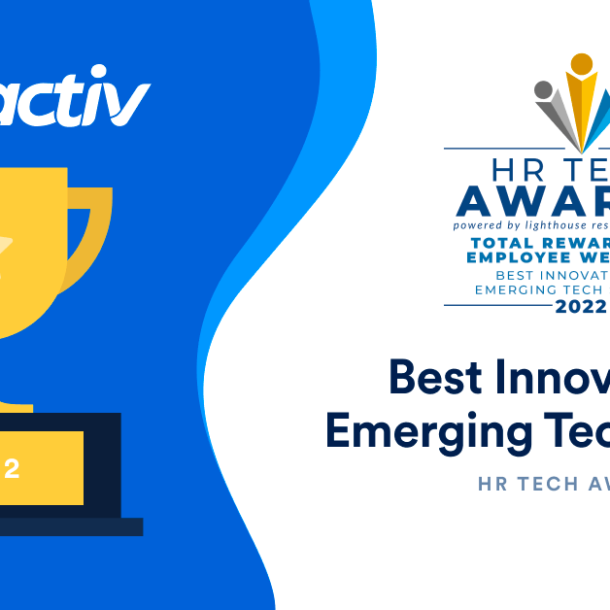
“Sustaining the Livelihood of the Hourly Worker” With Sabina Bhatia
Payactiv Chief Customer Officer, Sabina Bhatia, joins host, William Tincup, on the recruiting daily podcast. Each week, the podcast looks at strategies behind the world’s best talent acquisition teams. This week, Sabina and William discuss how Payactiv’s Earned Wage Access, Livelihood Platform, and more are transforming the lives of hourly workers. Listen here or read the discussion below.
William Tincup:
Ladies and gentlemen, this William Tincup and you are listening to recruiting daily podcast. Today, we have Sabina on from Payactiv, and we’ll be talking about the sustainability of the livelihood of the hourly worker. So a wonderful topic. And I can’t wait to learn about Sabina and Payactiv and just kind of get into this topic. So let’s jump right in. Sabina, would you do us a favor and introduce both yourself and Payactiv?
Sabina Bhatia:
Thank you so much William for having me. What a great platform for us to spread the word about what we are trying to do, our mission, and our end goal. My name is Sabina Bhatia. I am the Chief Customer Officer at Payactiv. Let me tell you a little bit about Payactiv. Payactiv invented the whole idea around Earned Wage Access, also known as EWA – you’ll hear that a lot. It was invented by our CEO, Safwan Shah, and launched over a decade ago. The purpose of Payactiv was really to improve the financial stability and livelihood of the paycheck to paycheck hourly worker. So that is the end goal, but there are many pieces that come together to make it a holistic mission, I would say, William, it’s not just what we do, but it’s how we do it that is important, but I hope that just a few, one-liners are helpful to start our conversation.
William Tincup:
100% paycheck to paycheck. I think a lot of folks think that they’re above it and they’re not. And you see a lot of, I guess, what people have historically seen as predatory loans and things like that. What’s your take on kind of how society, how we’ve tried to solve this in the past, that’s kind of failed.
Sabina Bhatia:
So great question. This is what we are seeing today, and it’s the whole idea behind the hourly worker and the essential worker, the definition has changed during the pandemic. Before the pandemic, or even during the pandemic, the essential worker was your healthcare hospital, senior living, but then during the pandemic, we realized, right? That any worker who had to leave their home and was helping us run the economy, could be your package handler from Amazon or FedEx or the grocery store cashier, all of them were running our economy. So the essential worker really became that 70 million Americans living paycheck to paycheck, but also making a huge contribution in helping us build the economy. And that is the employee base that we are serving, and that is the employee base our businesses are coming to us and trying to find innovative solutions to help that base. You know, I love to talk about what we are doing, but based on numbers and stories. So let me show you a use case.
William Tincup:
Sure.
Sabina Bhatia:
An already worker comes in the morning, they clock in, they work whatever six, seven hours, and they clock out. William, do they get paid that day? No, they do not. They have to wait for two weeks, sometimes three weeks, if they’re a new employee and the payroll runs in arrears to get their first paycheck. Now, this person is making $14, $15 an hour, and that is gross. They cannot wait to get paid. Now what has happened in the past, and it still is happening is when they don’t have access to that liquidity that they have already earned, but it is unpaid. They’re paying overdraft fees, they’re going to pay their loans, paying 600%, 700%, 800% APR to get $100, $200 to get by for the week for two weeks.
Sabina Bhatia:
I mean, think about this. This employee is stressed out, and is constantly thinking about how am I going to pay this bill? I hope I don’t get evicted. I hope my utilities don’t get shut off, an employer. Having an employee like that, in their headquarters, in their stores, catering to their clients like you and me, right? It’s a very disengaged worker. So we are here to serve that employee base. So now what is the solution we are proposing? The solution is to give them access to their earned, but unpaid wages. So today through Payactiv, it is a zero-cost benefit to the employer for the employee. They can access 50%, 60%, 70% of their earned, but unpaid wages between pay periods, as long as it is earned, hours are completed and they can just take care of that business and not have to think about money while at a checkout counter or dropping my package or at a hotel taking care of my baggage. They are not disengaged.
Sabina Bhatia:
Financial needs, the basic needs, at least are taken care of. So this is the difference that we are seeing. And we’ll get into the conversations as to what’s really happening at the employer base and why this is such a popular benefit, but I hope that was helpful.
William Tincup:
Oh, it’s super helpful. One of the worries with paying, again, kind of, I think is, as Uber and Lyft drivers would at the end of your shift or at the end of your ride, you can tab out moving that into both the hourly worker, but also the professional worker. I think economists, at least had voiced a fear that exacerbates the problem. I mean, in the sense of these are folks that don’t save already are already struggling. If they have access to the money that they’ve earned, which is, to your point earlier, they’ve earned it, they should be able to have access to it. Will they actually spend it on their bills or will they spend it elsewhere? And, will it create more problems?
William Tincup:
And it’s an interesting argument, but it’s still an argument that basically says, no, the business is going to hold your money because you don’t know how to spend your money and we’re going to, it’s a parental, right? But it is, and I know you’ve heard this from folks that it’s like, well, this, this is all great, but what if we give them the money and they waste it, then what? Will they come back and will he have created more problems than we were trying to resolve?
Sabina Bhatia:
So talking about numbers, right? So we run plenty of surveys with 2 million-plus users on our platform and what are you using your money for? Okay. So let’s just hear it from them. What you’re really using it for is just your basic necessities. The livelihood needs, right? Food, fuel, auto, shelter. That’s what they’re really using their money for. Right? It’s not like they’re going on vacations. Listen, they can’t go on a vacation because when they go on a vacation, they don’t get paid for those hours. It’s not like you and me, right? I can take three weeks’ vacation. I’m a salaried employee. I can still get paid, but for them earning those $12, $13, what they are doing is first thing, the livelihood needs are being met. And once you meet back, think about Maslow’s hierarchy of needs, right? Once you meet the livelihood needs, once you meet the livelihood once, that’s really when you get into that financial wellness, okay.
Sabina Bhatia:
Love and belonging. Now I have self-esteem. I have confidence. I have achievement. I can work towards those things and actually create a financial wellness mindset for yourself. That’s when morality, creativity, acceptance, and community, you’re a healthier person, but it’s the livelihood needs that people are taking care of. And it’s not just users, William. We actually have a lot of support from 2000 plus customers who are saying that, listen, the pandemic has changed things for us. We can’t think like that anymore. We want to take care of our people. The whole concept of human resources, right? Seriously. If human resources says, “Hey, do you want to step into my office? And let’s have a conversation?” The first thing is, oh my God, did I do something wrong? But no know that’s not what it’s about.
Sabina Bhatia:
Human resources is actually a source of resource for humans. And so during the pandemic, what has happened humans and employers recognized is that once again, survey results, 95% William, that’s a big number. Okay? 95% of hourly workers are interested in working for an employer who provides earn wage access. In fact, close to 80% are willing to switch to an employer who offers Earned Wage Access. So history says an hourly worker and the employer has a very transactional relationship. Meaning this is your skillset, this is what you’re going to fulfill on a daily basis. And I’m going to pay you an hourly wage for it. Okay? It’s a different community from your salary employee base. It’s not working like that anymore.
Sabina Bhatia:
Our workers are saying I want a benefit that is aligned with the rest of the organization. And employers are saying, you are the employee base that is closest to my customer, right? Every time I walk into a grocery store and a cashier wraps up my grocery and you know, I run my card and I leave, that person is talking to me. The employer does not want that person to be disengaged, right? So employers are actually very supportive. So that whole paternalism and know what they’re using their money for. We are way beyond that, William.
William Tincup:
I love that. And I’m glad, first of all, yes. Take us into the kind of the world of hourly workers today, because there’s a perception years ago, the hourly workers, essentially, kids getting out of high school, kids in college, his early stage career was basically the hourly market, most of the hourly market. And that is obviously not the hourly market of today. It’s totally transitioned, especially with the gig economy and people wanting to work differently. And this is pre-COVID and during COVID, right? People just wanted to work differently.
William Tincup:
I mean, a dear friend of mine that had six different gigs and he works when he wants to work, he doesn’t work and he has benefits through a company and life is good. Like there’s a week where he just doesn’t want to work. He doesn’t turn on any of his apps, doesn’t work. He’s in his forties and he chooses that. If I would’ve said that to somebody 10 years ago, they would’ve looked at me like I was crazy, but that’s more and more people are kind of choosing the way they work. What are you, what are you seeing with all your customers? What are you seeing as kind of the hourly mix? What do the hourly workers look like these days?
Sabina Bhatia:
So there are roughly 1.2 billion, nearly a third of the global workforce that are freelancers. Right. And we have about, 70 million American hourly workers, living paycheck to paycheck.
William Tincup:
Right.
Sabina Bhatia:
Now. What is interesting is that this employee base, they want their pay faster, and outcome-based. You yourself use the example of Uber. Right? I finished this drive, I finished my day’s work. I want my money. Right? So that instant gratification is becoming very important because of this employee base. So you have to cater to that employee base, right? You can’t have them waiting for two weeks. It’s just not going to work, right? You’re going to keep losing employees. Most employers that we work with, their turnovers, 80%, 90% because of the pandemic, turnover is one issue. Employers are telling us “I can’t even hire people”. So that is my bigger problem. So once again, it just keeps going back to if you’ve earned it and you need it, you should be able to access it.
Sabina Bhatia:
And this economy has taught us that they really want a benefit that is catered to them. In addition to that, you have the already workers that are living paycheck to paycheck, William, that are also unbanked and underbanked. So if you are unbanked and underbanked, I can’t pay bills online through my checking account because I don’t have enough money there, right I don’t have liquidity going into my checking account. So I have overdraft fees, right? So they are struggling to make any progress with savings for the future. So once again comes the added innovative, flexible benefit that you have to provide these employees.
William Tincup:
I love that. What industries are you seeing kind of where this traction the most is, again, I don’t want to, I don’t want to lead you any direction, but is there any one industry that is just really taking this and being really innovative with it?
Sabina Bhatia:
Well, you are taking me to a direction to tell you that when we started Payctiv, we said that we are going to serve every individual, right? Irrespective of the size of the company or the industry irrespective, right? Once again, if you earned it, you need it, you should be able to access it. So we do serve industries across the board. I would say the top industries that are hurting the most today are retail. You know, your BPOs, your call centers, and healthcare, right? Healthcare is just going to be an issue in the long run. And one because of the pandemic, but also because they have a large population of hourly workers that have a very relevant role. You like caregivers, right? A caregiver who’s taking care of my 90-year-old grandma. I don’t want too many different caregivers to take care of her.
Sabina Bhatia:
So I want that caregiver to be happy with the employer. Right? So that relationship between the caregiver and the client is very, very important. Same thing with hospitals, hospitals can’t afford it today to lose employees, right? Now you have omnicron, how are you going to cater to those things? You also have a lot of people who didn’t take care of regular healthcare because of the pandemic. You have to serve them too. So I would say healthcare is big out there. Senior living retail is obviously big out there and logistics, the package handlers, the warehouse facilities, they are hurting a lot, so we are definitely out there helping them out.
William Tincup:
So let’s talk a little bit about the retention of the hourly worker. Obviously, this could be a retention strategy to help them not live paycheck to paycheck, but I wanted to get kind of your take on their kind of the great resignation and kind of what you see in retention of hourly workers and people just opting not to work in certain hourly jobs, for whatever reason. What are those intersection points that you see with your customers?
Sabina Bhatia:
Goes back to the numbers that I had mentioned. Yes, the great resignation story and demanding flexible wage access and looking for new jobs has created a very high demand for an innovative benefit that is inclusive, right? So the 95% number I gave you, the workers that are interested in working for an employer who provides EWA cannot be ignored. Now, retention, we have done a lot of studies on the impact that a benefit like this and our benefit mix with the employer base, and the results are 89% would be willing to work for a longer period of time for an employer who offers EWA. We’ve seen an impact of 30, 35 to 40% on retention of hourly workers when an employer office on wage access and the Payactiv benefit to their employee base. So the impact is huge. Oh, I love that. And it can be quantified across the board. Doesn’t matter industry size.
William Tincup:
Where do you see hourly workers this year? Where do you see the trends with concrete? Because we’re talking about sustaining the livelihoods. What else do they need? Like if we, if we were creating magic wand and we could do what we needed to do with hourly workers to get them to a better place, what, what would that be for this year?
Sabina Bhatia:
So we talked about the gig workers, we talked about the hourly workers, we talked about the essential workers, right? You have to provide them an all-encompassing platform. We actually call it the livelihood platform. It has to be a platform that takes care of what they need for survival, but you also have to provide them a platform that allows them to sustain. So you have to have the long-term goals attached to your platform, just an instant gratification, taking care of a short-term, need is not enough.
Sabina Bhatia:
So EWA does fulfill the basic needs, but our platform is really an all-in-one digital wallet platform. So we have a whole marketplace of discounts. Now don’t look at discounts as discounts, think about it as savings, and employees today can go into our app and get savings for prescription discounts. You know how expensive prescriptions are and how many outreach workers actually have an insurance program that supports the kind of prescriptions they need, right? How many of can actually afford to take an Uber ride, right? Or let’s say, go grab a movie, right? Go and see a movie. They can get discounts on all those things on our platform. But here’s is a very important thing. We built a platform where it has three stories attached. It is the live, which is your own way to access, right? Just own your day.
William Tincup:
Right.
Sabina Bhatia:
Grow. Once you’ve taken care of your basic needs, we have a savings and a budgeting tool, goal-based savings. What are your goals for what to you want to see? You can do that on our platform. Now, third thing it’s called connect. So live, grow, and connect. Connect has become so essential for the employer as a tool to communicate with their hourly workers. Employers tell us that my already workers are all over the place. I don’t know how to connect with them. I can send them a newsletter on email, right? So our connect platform supports that for company announcements to pick up shifts, send them reminders, send them alerts if there’s a hurricane coming. What do you need to do to take care of emergencies? Things like that. So we built that platform to create a benefit that is a digital wallet, and really serves the long-term purpose of the Albany worker. And that is what they are looking for, William.
William Tincup:
I love that. You mentioned the unbanked earlier, how much of that 70 million is unbanked? If you don’t know the precise number, just your take on it.
Sabina Bhatia:
I would say, think about the unbanked or underbanked who either have a bank account that doesn’t service them a hundred percent. So no bill pay, you can’t get a check. If you get an overdraft, right? William, you and I can call in and get that excuse. It’s not going to be excused for them right now, your 17 million Americans living paycheck to paycheck, there is a high percentage that’s dealing with those struggles on a day-to-day basis. So in a year they end up paying about $1,500 in just these kinds of fees.
William Tincup:
Right. Penalties.
Sabina Bhatia:
Yes. And that is your unbanked and unbacked.
William Tincup:
Wow. That’s incredible. So let’s kind of wrap up with the things that you see for the rest of the year for Payactiv. So let’s just kind of go into the world because it’s February, we got the rest of the year to kind of think about, where do you see this going if COVID ends and we go back to normal-ish? What does that look like for Payactiv and it’s customers?
Sabina Bhatia:
So normal-ish.
William Tincup:
Yeah, normal-ish
Sabina Bhatia:
Yeah, exactly. So we are building that platform that I discussed using Maslow’s hierarchy index, right? As to how it works. Short-term solutions cannot be your only goal in your path to success. It just cannot be. You have to provide long-term growth. And it’s not just providing that perfect benefit, it’s not just what you’re doing, but how you do it is very important. So Payactiv is the only certified B Corp in this industry, holding us to a higher standard of social responsibility. And what that really means, William, is, for us, purpose and profit are equally important. We are going to make a quantifiable impact on communities on users and the employer base.
Sabina Bhatia:
You cannot just have a platform that helps the poverty worker to survive. It has to help them sustain their life and really live the life you’ve learned. You’ve helped us build this economy. You’ve got to participate in the progress of this economy. And that is where our head is. We are building the platform, we are growing the platform and the track traction from employers is escalated because that is what they want. They want financial wellness for their people, right? Not a short-term solution.
William Tincup:
I love it. As you said it’s survive and thrive. We got to get them over to survive because they’re struggling just to go from paycheck to paycheck just to survive. That’s my hierarchy needs. Now, if we can move them from survival to thriving, that helps everybody. It helps hourly workers, but it helps our economy. It helps everybody. So Sabina, thank you so much for coming on the recruiting daily podcast. This has been wonderful.
Sabina Bhatia:
Thank you so much, William.
William Tincup:
Absolutely. And thanks for everyone listening to the recruiting daily podcast until next time.
You’ve been listening to the recruiting live podcast by recruiting daily, check out the latest industry podcast, webinars, articles, and news at recruitingdaily.com.
Get Payactiv for your business
Related Articles
Key takeaways: Automated cashless tips provide a secure and efficient way to...
The heart of every business is its employees, and these employees need to be...
February is Black History Month, a time to honor the rich history, vibrant...
© 2025 Payactiv, Inc. All Rights Reserved
24 hour support: 1 (877) 937-6966 | [email protected]
* The Payactiv Visa Prepaid Card and the Payactiv Visa Payroll Card are issued by Central Bank of Kansas City, Member FDIC, pursuant to a license from Visa U.S.A. Inc. Certain fees, terms, and conditions are associated with the approval, maintenance, and use of the Card. You should consult your Cardholder Agreement and the Fee Schedule at payactiv.com/card411. If you have questions regarding the Card or such fees, terms, and conditions, you can contact us toll-free at 1-877-747-5862, 24 hours a day, 7 days a week.
** Central Bank of Kansas City does not administer, nor is liable for earned wage access.
Payactiv holds earned wage access services (EWA) license number 2591928EWA with the Wisconsin Department of Financial Institutions.
Apple and the Apple logo are trademarks of Apple Inc., registered in the U.S. and other countries. App Store is a service mark of Apple Inc., registered in the U.S. and other countries.
Google Play and the Google Play logo are trademarks of Google LLC.
Galaxy Store and the Galaxy Store logo are registered trademarks of Samsung Electronics Co., Ltd.




